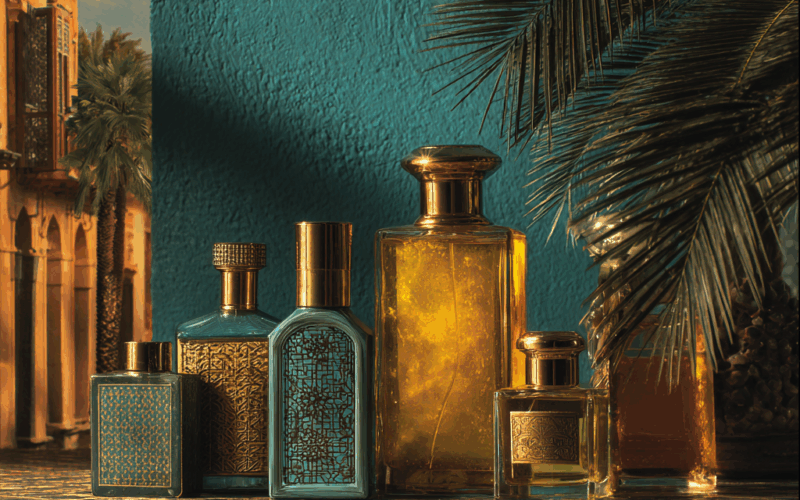The Allure of Travel-Inspired Perfumes
Travel-inspired perfumes are more than just pleasant aromas; they are invitations to embark on a sensory journey that transcends physical boundaries. By blending carefully chosen notes, perfumers can recreate the atmosphere of far-off places—whether it’s the salty breeze of a coastal village, the lush greenery of a rainforest, or the warm glow of a desert sunset. These fragrances allow wearers to experience the magic of travel without boarding a plane, triggering vivid memories or sparking new dreams with every spritz. The allure lies in their ability to forge an emotional connection between scent, place, and personal experience.
For many people, these perfumes serve as keepsakes of special moments, encapsulating the feelings of joy, wonder, and freedom that travel often brings. They offer a way to revisit a beloved destination at will, to carry a fragment of a cherished journey into daily life. Beyond nostalgia, they also provide an escape from the ordinary, transforming routine days into small adventures. By weaving together familiar notes with rare and exotic elements, travel-inspired scents open doors to worlds unseen, enriching the senses and expanding one’s emotional landscape.
Key Ingredients That Capture Exotic Landscapes
At the heart of any destination-inspired perfume are the ingredients that define its character and bring its imagery to life. Perfumes evoking tropical islands might use coconut, plumeria, and vanilla to suggest sunlit shores, while those inspired by the Mediterranean may feature lemon, bergamot, olive leaves, and aromatic herbs. Ingredients are like storytellers—they set the scene, convey the mood, and create the sensory palette from which the fragrance is painted. Every note is chosen for its ability to reflect textures, colors, and atmospheres unique to a location.
Sourcing plays a crucial role in authenticity. Many perfumers select raw materials from the very regions they represent, ensuring that each fragrance carries a genuine connection to its source. Spices from local markets, blossoms from wild hillsides, and resins gathered from ancient trees add complexity and depth, turning each composition into a piece of olfactory geography. This approach not only makes the scent more convincing but also immerses the wearer in the rhythms, scents, and stories of the land it represents.
Cultural Influences in Fragrance Creation
The cultural context of a destination often leaves an indelible mark on the perfumes it inspires. Traditional aromas tied to rituals, celebrations, and daily life become central elements in the fragrance’s identity. A scent inspired by a temple might include incense and sandalwood, while one rooted in coastal life could carry notes of sun-warmed driftwood or freshly caught sea breeze. These details make the fragrance a cultural artifact in its own right, preserving and sharing traditions through the medium of scent.
Perfumers often conduct deep research into local customs, sometimes working closely with artisans, historians, or herbalists to ensure accuracy. By blending historical knowledge with contemporary creativity, they can adapt age-old recipes to modern preferences without losing their cultural soul. This respect for heritage transforms a perfume from a simple accessory into a bridge between worlds, offering wearers a chance to participate—if only briefly—in the customs, artistry, and spirit of the destination.
Scent Profiles from Tropical Paradises
Tropical paradise-inspired fragrances are built around the warmth and vibrancy of island life. They often feature a lush bouquet of florals like tiare, hibiscus, and ylang-ylang, complemented by ripe fruits such as mango, papaya, and guava. Sweet undertones of coconut cream or vanilla add indulgence, while hints of saltwater or green palm leaves create a refreshing counterbalance. Together, these elements conjure visions of golden sands, swaying hammocks, and turquoise lagoons, inviting the wearer to surrender to relaxation.
The range of tropical perfumes can span from light and breezy daytime scents to rich, enveloping evening blends. A bright, airy version might highlight citrus and fresh petals for an uplifting effect, perfect for warm weather. In contrast, a deeper fragrance might layer tropical fruits with spices and gourmand notes, adding complexity and sensuality. Regardless of style, these scents aim to infuse daily life with the warmth, joy, and easy elegance of an island escape.
Oriental and Desert-Inspired Aromas
Fragrances that take inspiration from deserts and the Orient tend to have a rich, opulent character shaped by centuries of trade, tradition, and storytelling. They often lean into resinous, spicy, and woody notes like amber, oud, myrrh, saffron, and cinnamon. These ingredients create a deep, enveloping warmth that mirrors the golden sands, bustling souks, and starlit nights of these regions. The result is a fragrance that feels both ancient and timeless, steeped in mystery and allure.
To evoke the dry air and vast spaces of the desert, perfumers may incorporate earthy, mineral, or smoky undertones. Leather, incense, and exotic florals like jasmine or rose can be layered to suggest the sensory richness of caravan journeys and cultural exchanges along historic trade routes. These scents tend to be long-lasting and evolve gradually on the skin, making them ideal for special occasions or moments when one seeks to make a memorable impression. They embody the romance of exploration and the depth of history, offering a sensory journey as vast as the landscapes that inspire them.
Choosing the Perfect Destination-Inspired Fragrance
Choosing a travel-inspired perfume is as much about personal connection as it is about scent preference. It begins with identifying the destination that resonates with your emotions—perhaps a place you have visited and loved, or one that lives vividly in your imagination. From there, the search becomes an exploration of fragrances that capture the signature ingredients and moods of that location. A Mediterranean scent might offer crisp citrus and sun-baked herbs, while a tropical blend could be lush with florals and juicy fruits.
When narrowing your choice, consider not only the scent itself but also how it interacts with your skin and lifestyle. Ask yourself: Does this fragrance align with the mood I want to project? Will it feel right for the seasons and settings in which I plan to wear it? Sampling on skin is essential, as perfumes change over time and reveal different facets. In the end, the ideal travel-inspired perfume should feel like a personal passport—one spritz transporting you to your chosen destination, wherever you may be.
- Identify a destination that holds meaning for you.
- Explore scents with ingredients authentic to that region.
- Choose the mood and style you want the fragrance to convey.
- Test how the perfume develops on your skin throughout the day.
- Match the scent to the season and occasions you have in mind.
By following these steps, you can select a fragrance that not only delights your senses but also carries a story worth telling—one that connects you to places, cultures, and moments through the universal language of scent.
Questions and Answers
Answer 1: They blend specific notes and accords that reflect the landscapes, cultures, and atmospheres of a destination, enabling wearers to experience its essence through scent.
Answer 2: Ingredients sourced directly from the regions they represent enhance the fragrance’s realism, cultural connection, and emotional impact.
Answer 3: Cultural influences add depth, history, and artistic significance, turning a fragrance into a narrative that connects wearers to the traditions of a place.
Answer 4: They combine lush florals, ripe fruits, and refreshing aquatic or green notes to capture the warmth, vibrancy, and laid-back elegance of island life.
Answer 5: Their use of rich resins, spices, and deep woody notes creates a complex, long-lasting aroma associated with opulence, mystery, and cultural heritage.

